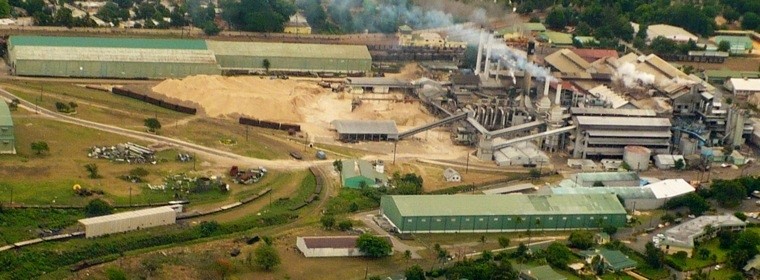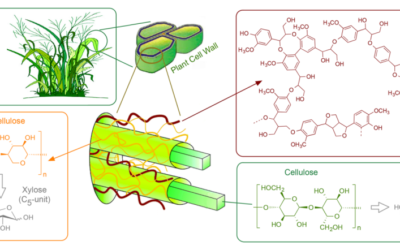
Largest Furfural Plant in the World (Dominican Republic)
The world’s largest furfural factories use bagasse as feedstock
Description
We view furfural as an alternate revenue stream either in lieu of electricity production or as an appendix to electricity co-generation. Furfural can be a very viable diversification alternative and integrates into new or existing sugar mills, whether they make ethanol, sugar or both.
View our presentation or download (registered users) the business plan and background information.
Rational

2nd Largest Furfural Plant: Sezela (South Africa)
(Picture: DalinYebo)
The lignocellulosic component that turns into furfural is the pentosan. Pentosan has a lower calorific value than cellulose and its conversion to ethanol can never be very efficient. It makes good sense to consider other uses than go-generation and/or cellulosic ethanol production.
Although bagasse has not a very high pentosan content and a low bulk density (compared to corncobs), it is attractive as a feedstock for furfural production because it is generally available at a sugar mill and generally in large quantities.
The bigger the better: there are technology/process reasons for that, but most of all, there is a market that is in need of large well prices furfural!
Storing of bagasse is challengeing and currently the these furfural plants operate not much longer than the sugar mill’s crushing season. We recently undertook feasibility studies that demonstrated viable furfural production for a large mill that only operates 180 days per year.
Integration issue: The residue of furfural production is suitable for boiler fuel and it is well understood: The above two furfural plants have been in operation since the 1950s and 70s, respectively.
The success of a modern furfural plant is based on the smart integration of the mass and energy balance with the sugar mill and (of course) on the expertise and experience that our “innovative minds” contribute.
Dates
Project development work started in 2011 and we’re seeking biomass owners (sugar millers) to partner with (large consumer of furfural guarantees off-take or may even co-invest).



